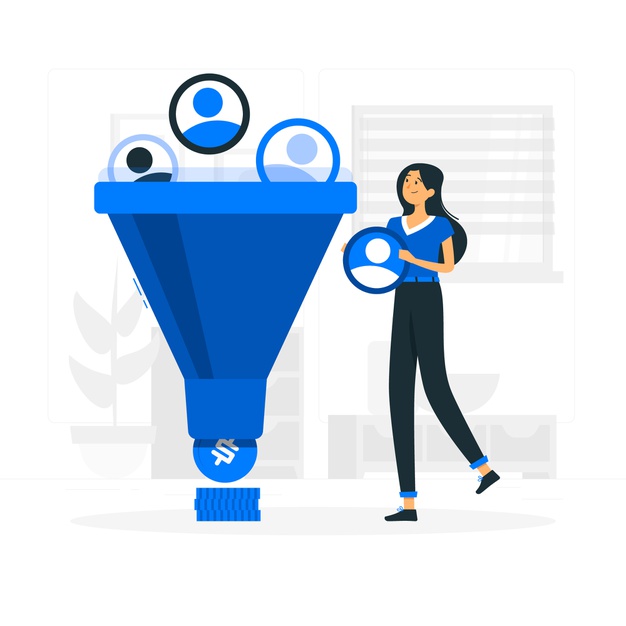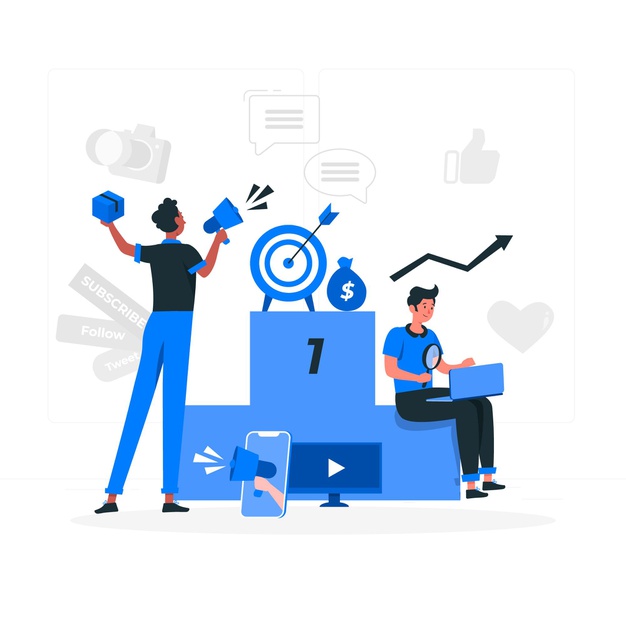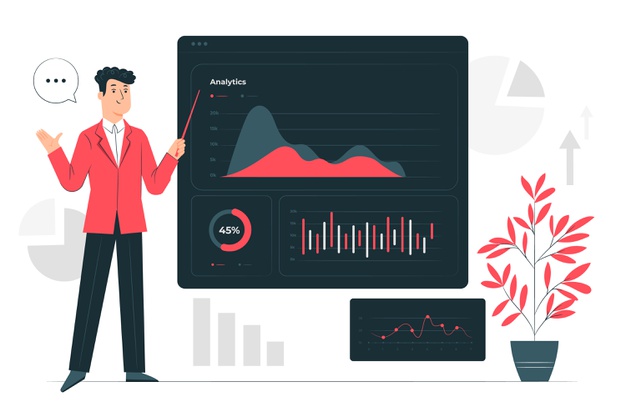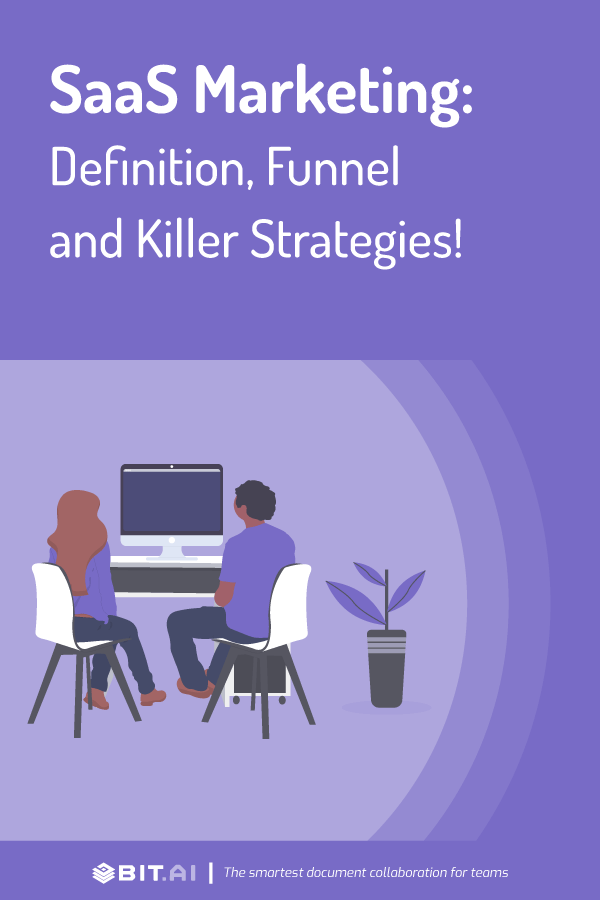Almost a decade ago, back in 2011, in a seminal WSJ essay, Marc Andreessen announced that “Software is eating the world.”
Nine years later, his thesis has turned out to be true– software as a service (SaaS) businesses have and will take over large parts of the economy.
In fact, a recent study notes that the average business should expect almost half of its software heaps to change within the next two years.
In other words, customers are addressing SaaS products like crazy!
 The software-as-a-service (SaaS) marketing model has been snowballing since 2010. Also, experts predict that the SaaS market will grow up to a whopping $60 billion By 2023. This will open a massive window of opportunity for all the SaaS businesses looking to stake their claim.
The software-as-a-service (SaaS) marketing model has been snowballing since 2010. Also, experts predict that the SaaS market will grow up to a whopping $60 billion By 2023. This will open a massive window of opportunity for all the SaaS businesses looking to stake their claim.
However, doing so means nailing down your SaaS marketing strategy, though!
In this guide, we’ve broken down all that you need to know about SaaS marketing. Including actionable strategies, SaaS funnel along with metrics analysis to help your company roll out the competition and drive leads ASAP.
What is SaaS Marketing? (Definition)
SaaS marketing is the method you use to promote this kind of software as a service.
Compared to businesses selling physical products or handling one-time purchases, the SaaS model is highly sustained by its customer experience along with service support provided to users of its technology and tools.
Companies offering software as a service to other businesses need to use several targeted marketing strategies to achieve the highest conversion rates possible, which we will learn about a few further in this guide!
What is a SaaS Marketing Funnel and its breakdown?
Most businesses set out with the right intentions of engaging as many potential prospects as possible to their product without a stable strategy.
To get more leads, these businesses try every technique they can think of and mimic what others are doing without regard to the unique needs of their ideal customers.
A great place to start when planning how to fill your customer pipeline is by creating a structured SaaS funnel!
 SaaS funnel is basically a sales and marketing technique used by SaaS companies to nurture leads up to the sale.
SaaS funnel is basically a sales and marketing technique used by SaaS companies to nurture leads up to the sale.
More like a sales cycle used by SaaS companies. Every SaaS business should must a conversion funnel (SaaS Funnel) that can track how many people convert into customers or users.
Traditionally a SaaS funnel is a documented procedure that looks at the SaaS marketing and sales process from start to end. It includes the following four primary stages:
SaaS Marketing Funnel Breakdown:
1. Website Audience
At the very top of your SaaS funnel comes the number of people who come to your website.
2. Trial Signup (Trial/Freemium)
Most SaaS businesses in most cases offer some kind of free trial for 15, 30 days. Once a person visits your website, this would traditionally be the next step in the funnel. They will need to signup for a free trial account with no license.
3. Using your SaaS
Trial signups are great, however, they don’t always work one your product trial is over. You’ll need to track the ones working and the ones not working. This will help you know who is a potential customer.
4. Paying Customers
What every business needs – paying customers. This is the last step of the SaaS funnel; it triggers when a customer pays.
You must be thinking “how do you get started with SaaS marketing?” after knowing all about it and its Funnel!
Read more: The Ultimate Beginners Guide For Sales Funnel With Examples!
Most Effective SaaS Marketing Strategies
When it comes to it, SaaS marketing is like any other marketing, that is, with a documented strategy.
Marketing without a planned strategy is parallel to driving in a thick fog. This means it should be avoided!
 With a well-defined strategy in place, you’ll be able to play all the marketing games against the competitors and also win.
With a well-defined strategy in place, you’ll be able to play all the marketing games against the competitors and also win.
Let’s see what all effective SaaS marketing strategies you need to include to become the top player:
1. Inbound Marketing
SaaS funnel directly mirrors the Inbound methodology, you can go back a step and evaluate how to create an inbound marketing strategy starting with describing your customers and illustrating their key traits.
These customer traits affect every step of the process with information about their online behavior, challenges, and communication preferences.
The inbound strategy helps you create content that addresses these challenges and helps customers resolve their problems.
Successful SaaS businesses differentiate from their competitors by focusing on problems their customers face and offering resources that solve those problems.
2. Content Marketing
Companies around the world are using content marketing to attract visitors to their website, build their brand, and generate leads.
A key benefit of content marketing is to have a compounding power of return on investment — just like a smart stake, it increases in the value of your brand over time.
Most Importantly, content continues to be the biggest source to drive leads, whereas other ways of marketing, like pay-per-click (PPC) advertising or co-marketing, will only work as long as you are constantly spending.
It’s, for this reason, we take content as an asset that businesses own, while online advertising is rented. This distinction is essential for marketers to consider in their saas marketing strategy.
3. Search Engine Optimization (SEO)
Search engine optimization works for hand in glove with content marketing by enabling your content to be easily discoverable on search engines like Google, Baidu, Bing, Yandex. SEO is mainly presented in two separate yet complementary categories: on-page SEO and off-page SEO.
 On-Page SEO
On-Page SEO
On-page SEO is entirely within your control. You need to build content that people want to read, link to, and share, but there are also other factors to consider.
Off-Page SEO
Premium-quality links from authoritative websites dwell quantity when it comes to off-page SEO. Along with backlinking, social media channels are also essential to link and share from influential accounts as a quality indicator.
Search engine optimization is one of the best ways to make sure your website shows up in relatable search results quickly both organically and inorganically.
So most, SaaS businesses can benefit from adding SEO to their marketing strategy.
4. Referral marketing
Referral marketing is when someone earns a commission by marketing your companies’ products or services. For referral marketing you need to create custom links for your affiliates to use, you can track the links that bring in leads, monitor how many convert to sales, and pay commission accordingly.
For SaaS businesses, referral marketing offers a couple of opportunities:
- Working with affiliate marketers to bring your product the best audience
- Partnership opportunities with other SaaS companies that provide services supportive to your own, so everyone can earn a commission for referring new prospects to each other.
If you are getting started with SaaS marketing, referral marketing is likely to be a good fit for you. It is an interesting additional marketing channel to explore, bringing in good-fit leads, and building brand recognition.
Read more: Marketing Funnel: What is it & How to Create it? (Steps included)
5. Google Ads
Well, there’s a lot to be said for the enormous reach of Google.
When you choose your target audience based on relevant or related keywords you are likely to get in touch with people looking for answers to their difficulties that your SaaS can solve for them.
 By introducing your product to them from the start of their research stage, you will have the opportunity to welcome them into your lead nurturing process and possibly receive a free-trial sign-up.
By introducing your product to them from the start of their research stage, you will have the opportunity to welcome them into your lead nurturing process and possibly receive a free-trial sign-up.
Google Ads provides various options for targeting and retargeting along with enough reporting to inform strategic changes with refining your demographic and getting the most for your SaaS marketing.
6. Agile marketing
Agile marketing works mainly on the concept of the agile software development process. Instead of planning a huge long-term marketing strategy, an agile SaaS marketing strategy works in shorter sprints.
This is easier to adapt, reposition, and refine your marketing strategy, come down on channels that are driving success, and cutting out ones that aren’t delivering to the mark.
In the ever-evolving world of tech and SaaS, most businesses can benefit from taking an agile approach to their marketing. Staying agile let marketers to be more responsive than ever, to focus their efforts to where it delivers.
7. Marketing automation
Automated marketing is the method of using software to automate marketing your tasks. Most SaaS businesses automate predictable, repetitive activities such as social media posts and email marketing.
It’s crucial to keep in mind that marketing automation is more like a, not strategy on its own. To be a success when using marketing automation, it demands a defined strategy for the processes you’re automating using this technology.
For a growing SaaS business, it will be difficult to run all your marketing tasks manually. Hence, marketing automation will be a great fit for your SaaS marketing strategy.
Measure your SaaS Marketing Metrics!
Marketers often say that “You can’t manage what you don’t measure“.
SaaS marketers often have loads of ideas about what would be good for generating better leads. But, it is speculation! The only best and true way to know what works is to test and measure the performance. So whenever you put up a new SaaS marketing campaign or practice any strategy, it’s important that you monitor key performance indicators as well!
 What metrics should you have for your marketing campaigns?
What metrics should you have for your marketing campaigns?
This mainly depends upon the objective of your campaign and strategy. For example, the metrics for an SEO campaign will be different from that of a brand awareness campaign!
Most of the SaaS businesses focus on lead generation till they are at an enterprise level, but what are the metrics needed to be measured for such a strategy?
The metrics can be broken down into three main categories areas:
Leads
- The conversion rate from lead or visitor?
- The cost-per-lead/qualified lead
- The conversion rate from lead to qualified lead (trail/meeting)?
Visitor metrics
- The number of visitors did the strategy attracts?
- The cost-per-click per visitor?
Customers
- The conversion rate from qualified lead to a paying customer?
Once you gauge these high-level metrics, you can easily then break it down per strategy. Carefully, look at each of these metrics per activity, for example from your Google Ads.
Getting Started…
SaaS marketing isn’t as easy as it seems. The consumer market for SaaS products is information and value-hungry.
They want to be helped in making a better and informed decision, at the same time, personify their journey with your brand – right from the point they discover your business to signing up for a trial and eventually getting onboarded.
The above-mentioned strategies have been effectively working across various SaaS markets and target industries. Yet there’s always more that you can do!
Further reads:
Top SaaS Products for Small Businesses in 2021
Marketing Report: Definition, Types, Benefits & Things to Include!
Guerrilla Marketing: What is it and How to Use it For Marketing!
14 Guerrilla Marketing Examples & Ideas You Must Explore!
12 Must-Have SaaS Tools for Remote Teams!
The Ultimate Guide to SaaS: History, Statistics, and Tools!
Top SaaS Influencers You Must Follow



